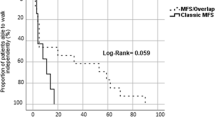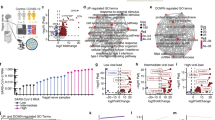Abstract
Background
Guillain–Barré syndrome (GBS), when severe, involves the autonomic nervous system; our objective was to assess the spectrum and predictors of dysautonomia, and how it may impact functional outcomes.
Methods
A retrospective review of patients admitted to the Mayo Clinic in Rochester, MN between January 1, 2000, and December 31, 2017, with GBS and dysautonomia was performed. Demographics, comorbidities, parameters of dysautonomia, clinical course, GBS disability score, and Erasmus GBS Outcome Score (EGOS) at discharge were recorded.
Results
One hundred eighty seven patients were included with 71 (38%) noted to have at least one manifestation of dysautonomia. There are 72% of patients with a demyelinating form of GBS and 36% of patients with demyelination had dysautonomia. Ileus (42%), hypertension (39%), hypotension (37%), fever (29%), tachycardia or bradycardia (27%), and urinary retention (24%) were the most common features. Quadriparesis, bulbar and neck flexor weakness, and mechanical ventilation were associated with autonomic dysfunction. Patients with dysautonomia more commonly had cardiogenic complications, syndrome of inappropriate antidiuretic hormone, posterior reversible encephalopathy syndrome, and higher GBS disability score and EGOS. Mortality was 6% in patients with dysautonomia versus 2% in the entire cohort (P = 0.02).
Conclusions
Dysautonomia in GBS is a manifestation of more severe involvement of the peripheral nervous system. Accordingly, mortality and functional outcomes are worse. There is a need to investigate if more aggressive treatment is warranted in this category of GBS.


Similar content being viewed by others
Abbreviations
- GBS:
-
Guillain–Barré syndrome
- AIDP:
-
Acute demyelinating polyradiculoneuropathy
- ICU:
-
Intensive care unit
- PRES:
-
Posterior reversible encephalopathy syndrome
- SIADH:
-
Syndrome of inappropriate antidiuretic hormone
- EGOS:
-
Erasmus GBS Outcome Score
- CIDP:
-
Chronic inflammatory polyradiculoneuropathy
- CMAP:
-
Compound muscle action potential
- mV:
-
Millivolts
- CSF:
-
Cerebrospinal fluid
- IVIG:
-
Intravenous immunoglobulin
- PLEX:
-
Plasmapheresis
- PE:
-
Pulmonary embolism
- DVT:
-
Deep vein thrombus
- IQR:
-
Interquartile range
- OR:
-
Odds ratio
- CI:
-
Confidence interval
References
Wijdicks EF, Klein CJ. Guillain–Barre syndrome. Mayo Clin Proc. 2017;92(3):467–79.
Flachenecker P, Hartung HP, Reiners K. Power spectrum analysis of heart rate variability in Guillain–Barré syndrome. A longitudinal study. Brain. 1997;120(10):1885–94.
Tuck RR, McLeod JG. Autonomic dysfunction in Guillain–Barre syndrome. J Neurol Neurosurg Psychiatry. 1981;44(11):983–90.
Guz A, et al. The role of vagal and glossopharyngeal afferent nerves in respiratory sensation, control of breathing and arterial pressure regulation in conscious man. Clin Sci. 1966;30(1):161–70.
Pfeiffer G. Dysautonomia in Guillain–Barre syndrome. Nervenarzt. 1999;70(2):136–48.
Nabi S, et al. Posterior reversible encephalopathy syndrome (PRES) as a complication of Guillain–Barre’ syndrome (GBS). BMJ Case Rep. 2016. https://doi.org/10.1136/bcr-2016-216757.
Banakar BF, et al. Guillain–Barre syndrome with posterior reversible encephalopathy syndrome. J Neurosci Rural Pract. 2014;5(1):63–5.
Ropper AH, Wijdicks EFM, Truax BT. Guillain–Barré syndrome. Contemporary neurology series. F.A. Davis: Philadelphia; 1991.
Singh NK, et al. Assessment of autonomic dysfunction in Guillain–Barre syndrome and its prognostic implications. Acta Neurol Scand. 1987;75(2):101–5.
Pfeiffer G, et al. Indicators of dysautonomia in severe Guillain–Barre syndrome. J Neurol. 1999;246(11):1015–22.
van Koningsveld R, et al. A clinical prognostic scoring system for Guillain–Barre syndrome. Lancet Neurol. 2007;6(7):589–94.
Hocker SE, et al. Indicators of central fever in the neurologic intensive care unit. JAMA Neurol. 2013;70(12):1499–504.
Fugate JE, Rabinstein AA. The diagnosis of posterior reversible encephalopathy syndrome—authors’ reply. Lancet Neurol. 2015;14(11):1075.
Hughes RA, et al. Controlled trial prednisolone in acute polyneuropathy. Lancet. 1978;2(8093):750–3.
Yuki N, Hartung HP. Guillain–Barre syndrome. N Engl J Med. 2012;366(24):2294–304.
Guillain–Barre Syndrome Study Group. Guillain–Barre syndrome: an Italian multicentre case-control study. Neurol Sci. 2000;21(4):229–34.
Zochodne DW. Autonomic involvement in Guillain–Barre syndrome: a review. Muscle Nerve. 1994;17(10):1145–55.
Winer JB, Hughes RA, Osmond C. A prospective study of acute idiopathic neuropathy. I. Clinical features and their prognostic value. J Neurol Neurosurg Psychiatry. 1988;51(5):605–12.
Haymaker WE, Kernohan JW. The Landry–Guillain–Barre syndrome; a clinicopathologic report of 50 fatal cases and a critique of the literature. Medicine (Baltimore). 1949;28(1):59–141.
Lichtenfeld P. Autonomic dysfunction in the Guillain–Barre syndrome. Am J Med. 1971;50(6):772–80.
Bredin CP. Guillain–Barre syndrome: the unsolved cardiovascular problems. Ir J Med Sci. 1977;146(9):273–9.
Soffer D, Feldman S, Alter M. Clinical features of the Guillain–Barre syndrome. J Neurol Sci. 1978;37(1–2):135–43.
Greenland P, Griggs RC. Arrhythmic complications in the Guillain–Barre syndrome. Arch Intern Med. 1980;140(8):1053–5.
Burns TM, et al. Adynamic ileus in severe Guillain–Barre syndrome. Muscle Nerve. 2001;24(7):963–5.
Zaeem Z, Siddiqi ZA, Zochodne DW. Autonomic involvement in Guillain–Barre syndrome: an update. Clin Auton Res. 2019;29(3):289–99.
Anandan C, Khuder SA, Koffman BM. Prevalence of autonomic dysfunction in hospitalized patients with Guillain–Barre syndrome. Muscle Nerve. 2017;56(2):331–3.
Elahi A, Kelkar P, St Louis EK. Posterior reversible encephalopathy syndrome as the initial manifestation of Guillain–Barre Syndrome. Neurocrit Care. 2004;1(4):465–8.
Van Diest D, et al. Posterior reversible encephalopathy and Guillain–Barre syndrome in a single patient: coincidence or causative relation? Clin Neurol Neurosurg. 2007;109(1):58–62.
McLeod JG. Invited review: autonomic dysfunction in peripheral nerve disease. Muscle Nerve. 1992;15(1):3–13.
Asahina M, et al. Autonomic function in demyelinating and axonal subtypes of Guillain–Barre syndrome. Acta Neurol Scand. 2002;105(1):44–50.
Acknowledgements
No other acknowledgements.
Author information
Authors and Affiliations
Contributions
This study required no sponsorship or funding. Tia Chakraborty MD authored, conceptualized, acquired data, performed all statistical analyses, drafted, and revised the manuscript. She had full access to all of the data in the study and takes responsibility for the integrity of the data and the accuracy of the data analysis. Christopher Kramer MD analyzed and acquired data, conceptualized, drafted, and revised the manuscript. Eelco Wijdicks MD PhD authored, conceptualized, drafted, and revised the manuscript. Alejandro A. Rabinstein MD authored, conceptualized, drafted, and revised the manuscript.
Corresponding author
Ethics declarations
Source of Support
Not applicable.
Conflict of interest
All authors declare that they have no conflict of interest.
Ethical Approval/Informed Consent
The Mayo Clinic Institutional Review Board approved this study.
Additional information
Publisher's Note
Springer Nature remains neutral with regard to jurisdictional claims in published maps and institutional affiliations.
Rights and permissions
About this article
Cite this article
Chakraborty, T., Kramer, C.L., Wijdicks, E.F.M. et al. Dysautonomia in Guillain–Barré Syndrome: Prevalence, Clinical Spectrum, and Outcomes. Neurocrit Care 32, 113–120 (2020). https://doi.org/10.1007/s12028-019-00781-w
Published:
Issue Date:
DOI: https://doi.org/10.1007/s12028-019-00781-w




